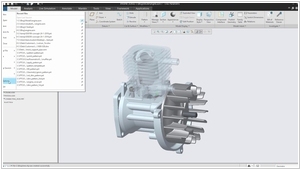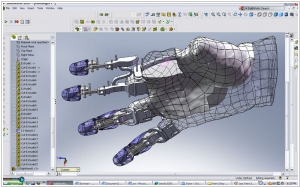Creo vs SOLIDWORKS
September 21, 2023 | Author: Michael Stromann
11

Creo is the 3D CAD solution that helps you accelerate product innovation to build better products faster. Easy to learn, Creo uses a model-based approach to seamlessly take you from the earliest phases of product design to manufacturing, and beyond. Available both on-premises and as a SaaS product.
19

Solid modeling computer-aided design, computer-aided engineering, 3D CAD design an collaboration, analysis, and product data management software. SOLIDWORKS Cloud offer combines proven design and collaboration tools that allow you and your stakeholders to work together from anywhere, on any device, using a web browser.
Creo and SOLIDWORKS are both powerful 3D CAD (Computer-Aided Design) software solutions used in various industries for product design and engineering, but they have several key differences that can influence the choice between them.
Firstly, the user interface and design philosophy of these two software packages differ. Creo, developed by PTC, is known for its parametric and feature-based modeling approach. It uses a history-based model tree to record and manage design changes, which can be highly useful for complex, large-scale projects. SOLIDWORKS, on the other hand, employs a more direct modeling approach that allows users to make changes to 3D models on the fly, making it a more intuitive choice for some designers. The choice between the two often comes down to personal preference and the specific workflow needs of the user or organization.
Secondly, the level of integration and breadth of capabilities varies. SOLIDWORKS is known for its extensive ecosystem of integrated tools and add-ons, such as simulation, sheet metal design, electrical design, and PDM (Product Data Management). This makes it an all-in-one solution for many engineering needs. Creo, on the other hand, also offers a range of modules and extensions for various purposes but may require more customization to achieve a similar level of integration. The choice between the two depends on the specific design and engineering requirements of the user or organization.
See also: Top 10 CAD software
Firstly, the user interface and design philosophy of these two software packages differ. Creo, developed by PTC, is known for its parametric and feature-based modeling approach. It uses a history-based model tree to record and manage design changes, which can be highly useful for complex, large-scale projects. SOLIDWORKS, on the other hand, employs a more direct modeling approach that allows users to make changes to 3D models on the fly, making it a more intuitive choice for some designers. The choice between the two often comes down to personal preference and the specific workflow needs of the user or organization.
Secondly, the level of integration and breadth of capabilities varies. SOLIDWORKS is known for its extensive ecosystem of integrated tools and add-ons, such as simulation, sheet metal design, electrical design, and PDM (Product Data Management). This makes it an all-in-one solution for many engineering needs. Creo, on the other hand, also offers a range of modules and extensions for various purposes but may require more customization to achieve a similar level of integration. The choice between the two depends on the specific design and engineering requirements of the user or organization.
See also: Top 10 CAD software


